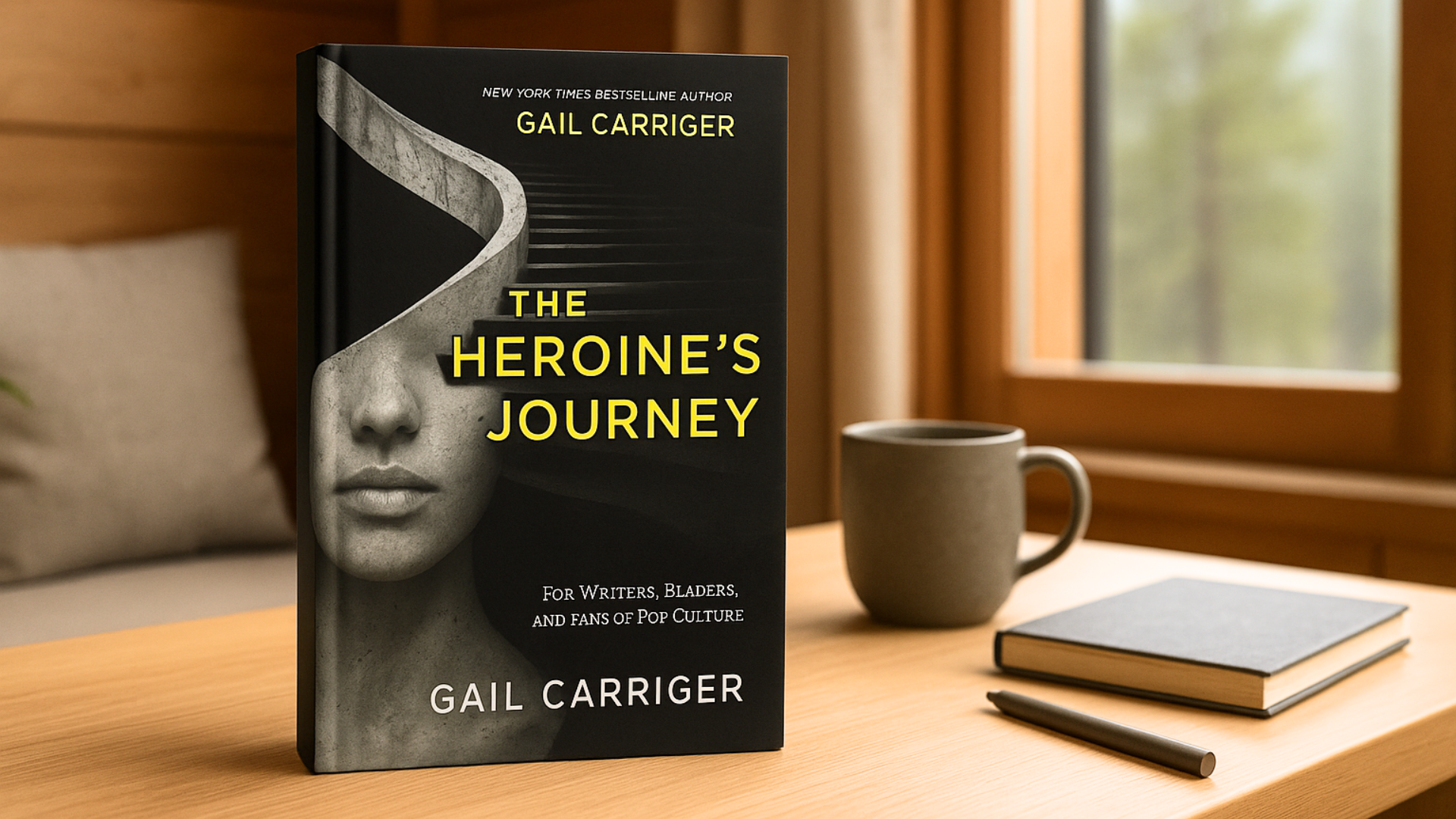Gail Carriger’s The Heroine’s Journey and the Power of Community

Book Review: The Heroine’s Journey by Gail Carriger
A thoughtful, story-rich guide to embracing a narrative structure that values connection, care, and emotional growth
In The Heroine’s Journey, Gail Carriger reframes how we think about stories by presenting a compelling alternative to the widely known hero’s journey. Drawing from myth, literature, pop culture, and her experience as a novelist, Carriger introduces the heroine’s journey as a structure focused on restoration, connection, and returning home rather than conquering or separating. This book is both a cultural critique and a creative guide, ideal for writers, readers, and anyone curious about how storytelling shapes our understanding of strength.
What the book promises
Carriger promises to define and demystify the heroine’s journey, offering a clear explanation of how it differs from the more dominant hero’s path. She makes it clear from the beginning that the heroine’s journey is not about gender. Instead, it is about the emotional and relational arc of the story.
The book sets out to help readers identify this structure in stories they already love, and to encourage writers to build narratives that centre emotional bonds, support systems, and the power of vulnerability. Carriger promises that stories told through this lens are just as valid, dynamic, and impactful as those that follow more familiar patterns.
What the book delivers
Carriger delivers a smart and accessible framework that readers can apply to a wide range of stories. She begins by breaking down the differences between the hero’s journey and the heroine’s, showing that they are not in opposition, but rather offer different paths to transformation. While the hero often separates, fights, and returns alone, the heroine gathers allies, shares power, and builds community along the way.
Throughout the book, Carriger provides examples from film, fiction, and myth to illustrate her points. She draws from stories like Wonder Woman, Spirited Away, Frozen, and Legally Blonde to show how narratives grounded in connection and emotional resilience often follow the heroine’s model, even if they are not always recognised as such.
What stands out is how Carriger names and validates the emotional experiences that drive the heroine’s arc. She makes space for joy, grief, friendship, and healing as important forces within storytelling. Her tone is inclusive and affirming, reminding the reader that the desire for connection is not weakness. It is a powerful form of agency.
Style and structure
Carriger’s voice is warm, candid, and often humorous. She writes as someone who loves stories deeply and wants others to feel empowered by the act of creating and interpreting them. Her tone is welcoming to both experienced writers and those new to narrative structure.
The book is structured in a way that is both informative and easy to navigate. Carriger starts with foundational concepts and builds toward application. Charts, summaries, and recurring reference points help readers keep track of key ideas. There is a balance between theory and lived example, which makes the book feel grounded and practical without becoming overly technical.
Although the subject matter is rich, the pacing feels light and engaging. Carriger invites readers to see what has been there all along, offering a shift in perspective that can open up new creative and analytical possibilities.
Where the book shines
This book shines in its ability to honour emotional truth as a storytelling tool. Carriger presents the heroine’s journey as a structure that reflects how many people actually experience change, especially those who find strength through care, collaboration, and persistence rather than confrontation.
Her examples are accessible and wide-ranging. From fantasy films to romantic comedies to traditional mythology, Carriger makes it easy to see how the heroine’s journey plays out across genres. This recognition can feel like a relief to readers and writers who have long felt that their favourite stories were dismissed or misunderstood.
The book also succeeds in validating relational strength. Carriger dismantles the idea that only solitary, stoic protagonists are worth following. She shows that building and maintaining relationships can be central to a story’s arc, and that emotional openness is not only meaningful but transformative.
Light limitations
Readers seeking a highly structured writing guide may find that this book leans more toward theory and reflection than step-by-step planning. While there are practical tools, the focus remains on reframing how we understand story, rather than offering a rigid system to follow.
A few readers may also wish for deeper exploration of non-Western storytelling forms. Carriger acknowledges this limitation and positions her framework within a Western literary and cultural context. Still, the ideas in the book could easily spark curiosity about how other traditions have long centred similar narrative values.
Final thoughts
The Heroine’s Journey is an insightful and encouraging book for anyone who wants to tell or better understand stories that centre connection, healing, and community. Gail Carriger has written a guide that not only helps readers identify this structure in fiction, but also offers a way to reimagine how strength can be portrayed on the page.
This is not a rejection of traditional storytelling. It is an expansion. Carriger’s framework honours stories where emotional truth, mutual support, and inner alignment matter just as much as victory. In doing so, she gives voice to narratives that have always existed but have often been undervalued.
Highly recommended for writers, educators, creatives, and thoughtful readers who are drawn to stories of heart, humour, and human connection.